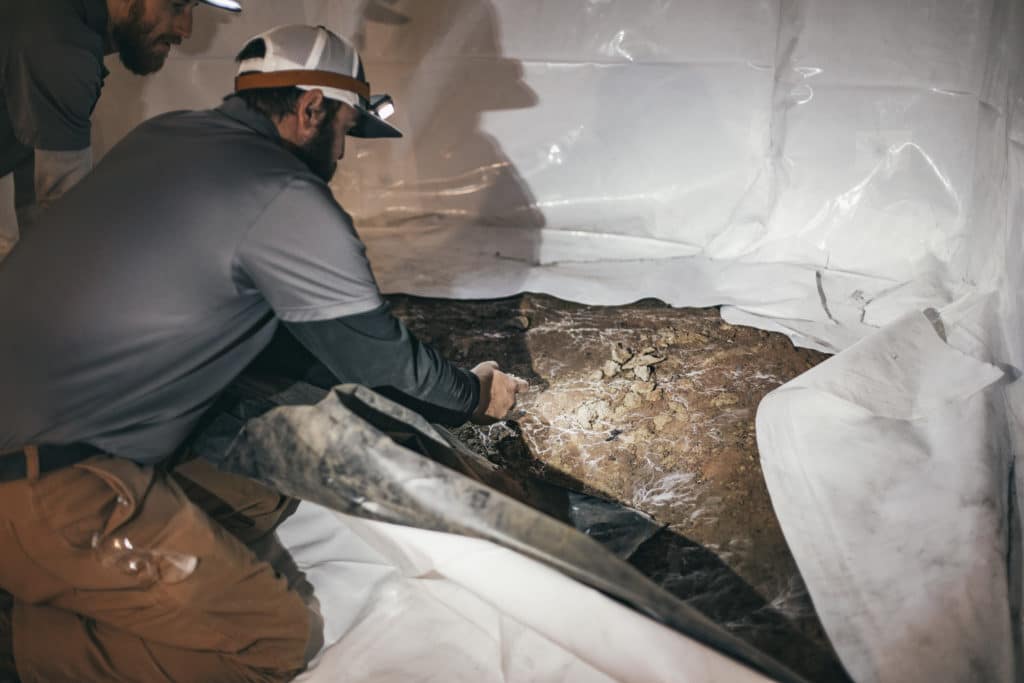What do you do if you find water in your crawl space? You don’t want to panic, but the last thing you want is for the problem to get worse.
Luckily, there are several things that you can do on the spot if you’re sure you’re ready to roll up your sleeves and do some hard work.
Many people find water in their crawl space and panic. This reaction is understandable.
The water can serve as a sign of more significant problems. What if the water’s been left unchecked for a very long time and is damaging the wood? Well, panicking won’t help.
Here, we’ll tell you what to do. We’ll help you get a handle on the problem.
To learn more about what to do when you find water in your crawl space, keep reading.
Water in Your Crawl Space: You’re Not Alone
Water in the basement is a common problem for many property owners. Also, some regions are more prone to flooding than others. What’s more, it’s a cause for alarm, and rightly so.
Your crawl space should not remain damp or take on water. You must address the issue fast. By the way, if your home lies in a flood plain, it’s a good idea to buy flood insurance.
A wet crawl space can cause musty odors. Even worse, it can lead to mold or even structural rot. Fortunately, there are a couple of fixes you can do to remedy the issue.
First, you need to identify the source of the water. Then, you can fix the problem.
The water could come from many sources. For instance, groundwater or rainwater could come from cracks in your foundation. Alternatively, you may have a drainage tile issue.
The problem may also lie with your gutters. A failed or improperly installed gutter and downspout system can also contribute to moisture in your crawl space. In any of these scenarios, you must figure out what’s wrong before you can get started fixing the problem.
Prioritizing Water Remediation Tasks
Before you start looking for the problem, you need to figure out how to get into your crawl space. Here, you’ll need to locate the access panel.
Sometimes it’s located on the exterior wall of the foundation. Other times, the entrance to your crawl space might lie under a hatch in the floor. This kind of entrance is typically in a closet or utility area.
You’ll need a flashlight in the crawl space. You also need sturdy work clothes to crawl around in the dirt. You may also consider bringing down some plastic sheeting into the crawl space so that you have a clean area to lay on your back and inspect the underside of your flooring.
You’ll want to inspect every area of your crawl space. Use your flashlight and search everywhere on the ground for moisture. Now, you want to check the structural members of your house that are above you for water damage.
On the ground, look for puddling or standing water in your crawl space. On the above structure, however, you want to look for signs of discoloration or mildew. You’ll also look for rot on the wood posts or piers.
Where Does the Water Come From?
Figuring out where the water’s getting into your house is the first step to tracing its source. Here, it’s important to identify whether the source originates above or below ground.
Below ground moisture may come from groundwater that seeps up into your crawl space. Conversely, an aboveground leak might indicate a plumbing problem.
Sources Below the Waterline
During the rainy season, below-ground water seepage can become especially problematic. You might notice water in your crawl space during this time of year.
In that case, you’re most likely dealing with a water problem that originates below the waterline. You could see water in your crawl space after heavy rain. It might also occur due to a rising water table.
Sources Above the Waterline
In other instances, your water problems may not align with seasonal changes. In that case, it’s possible that you’re dealing with a problem that originates above the waterline.
Again, this kind of problem typically starts with a plumbing problem. For instance, you may have a leak somewhere in your drainpipe.
Alternatively, you may have a problem with a water supply pipe. Both types of plumbing pipes run beneath the floor in your crawl space.
You may notice puddling or pooling water directly below your tub, shower or toilet. You may also see water buildup under plumbing fixtures or beneath drainpipes.
In these instances, you’re most likely dealing with a plumbing-related water issue. In that case, you’ll want to find a plumber quickly.
Sources From Inside Your Home
It just might surprise you to find out that there’s a third possibility when it comes to the origin of a water problem. You could have water that originates from an internal water source.
For instance, humidity could create water vapor. The water vapor would then transfer up from the ground into your crawl space.
In this instance, however, you’ll seldom see your crawl space full of water, but you may see moisture. Also, you might see widespread signs of mold or mildew on the wooden framing of your crawl space.
If you don’t have a vapor barrier properly installed in your crawl space, this kind of moisture can become a serious problem. Also, your basement needs adequate ventilation to help remedy this issue.

Creating a Trench
In some cases, it could also make sense to control the flow of water in your crawl space. You can set up a trench system that will capture any water that gets into the perimeter of the area.
When the water enters your trench, it will get diverted into gravel-filled channels. The channels will use gravity to feed the water to a sump pump pit. The sump pump will then divert the water out of your crawl space.
Starting the Job
Before you begin digging your trench, you’ll need to remove the vapor barrier. Roll it up and place it outside of the crawl space entrance.
Now, you’ll need to dig a trench around the entire interior of your foundation. You’ll use the foundation as a guide.
Here, it’s critical to ensure that you dig your trench between 8 and 24 inches from your foundation. If you did get any closer, the trench could undermine the stability of your foundation and your home.
Now, you’ll install a drainpipe in the trench. You’ll then cover the pipe with drain rock, filling in the trench.
Finishing Up the Trench
Now, spread the soil that you displaced by digging the trench around in your crawl space. Once you finish this task, you can get started installing the sump pump.
You want to install the sump pump at the low-end perimeter of your trench. The sump pump will automatically start whenever water builds up in your trench.
Also, you need to route a discharge pipe away from the sump pump. It should lead to an appropriate location outside of your crawl space.
You also need to install a new vapor barrier. The barrier will prevent moisture transfer from the ground into your basement.
Finally, you may need to install ventilation. This feature is important if there’s inadequate ventilation in your crawl space. For this part of the job, you’d install vents on the exterior wall of your crawl space.
You might have a very large crawl space. In that case, you may also want to install an electric ventilation fan. The fan will help to create cross-ventilation in your crawl space.
These are the basic steps you’ll need to take if you find pooling in your crawl space. However, they’re only the beginning steps of ensuring that your crawl space stays moisture-free.
As you can see, just doing basic remediation for water in your crawl space is a lot of work. If you think the job is too much to do on your own, it’s a good idea to hire a professional who’ll do the job right the first time and keep your home safe.
Dealing With the Problem Head On
It’s not hard to understand the work that you’ll need to do to fix a problem in your crawl space. In reality, however, the project itself is backbreaking labor. Many people hire a contractor for this reason.
Also, you’ll more than likely need to hire a contractor if you must install a sump pump. You’ll need a GFCI outlet for the device.
If you don’t have one in place already, you’ll need a professional contractor to install it. If you do it yourself, you must apply for a permit. You must also comply with any zoning codes for your area.
In many cases, an expert crawl space service can complete the work needed to keep your crawl space dry for less money than it will cost you to do it on your own. What’s more, they’ll get the job done much faster.
Still, you might wonder who to call for water in your crawl space. We know just the expert for the job.
Get Your Crawl Space Fixed Right the First Time!
Now you know more about what to do when you find water in your crawl space. Hopefully, you also see that the job is easier said than done.
Crawlspace Medic’s water remediation experts know exactly what to do to whip your crawl space back into tip-top condition as soon as possible. We’ll make sure that your family or business stays secure and safe for the long haul.
If you see pooling or puddling in your crawl space, get expert help right away. Contact Crawlspace Medic today at (866) 882-7295 to schedule a free crawl space inspection.

